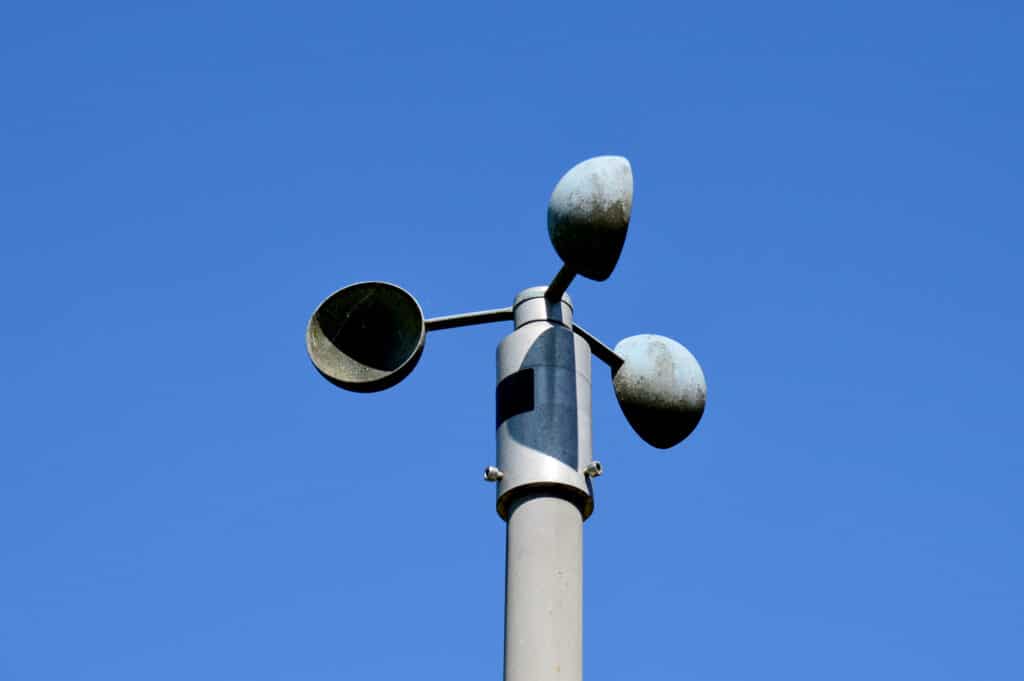The Role of an Anemometer in Improving Security for Outdoor Activities
The Role of an Anemometer in Improving Security for Outdoor Activities
Blog Article
All You Need to Learn About Anemometers: Exactly How They Work, Why They Issue, and Where to Utilize Them
Anemometers, however typically neglected in the world of scientific instruments, play a crucial role in numerous areas, supplying useful insights into wind speed and air flow patterns. As we delve into the intricacies of anemometer innovation, we will certainly reveal the inner workings of these devices, their significance, and the vital factors to consider when selecting the right anemometer for details applications.

Anemometer Fundamentals
A vital instrument used to gauge wind speed and instructions, the anemometer plays an essential role in weather forecasting and various industries. An anemometer usually includes three or four cups that turn in the wind, a vane that points right into the wind, and sensors to track the activities or turnings. By determining the rotations or movements over a specific amount of time, the anemometer can figure out wind speed. The vane helps establish wind instructions by aiming right into the wind, supplying important data for weather condition forecasting, aviation, maritime procedures, environmental tracking, and wind energy applications.
There are various types of anemometers readily available, including cup anemometers, vane anemometers, hot-wire anemometers, and sonic anemometers, each with its unique attributes and applications. Cup anemometers are generally utilized for fundamental wind rate measurements, while vane anemometers are chosen for directional measurements.
Concepts of Anemometer Procedure
Structure on the fundamental understanding of anemometer fundamentals, the concepts of anemometer procedure clarify the technicians behind wind speed and direction dimensions. Mug anemometers, for instance, have three or more cups that capture the wind, causing them to rotate faster as the wind speed increases. Hot-wire anemometers count on a warmed cord that cools down as wind passes over it, with the rate of cooling determining the wind speed.
Significance of Anemometers
The value of anemometers in meteorology and various sectors can not be overstated. Anemometers play a vital function in determining wind speed and instructions, giving essential information for weather condition forecasting, environment researches, ecological monitoring, and aeronautics operations. Meteorologists depend on anemometers to collect precise wind data, assisting them recognize weather condition patterns, predict tornados, and problem prompt warnings to the general public. In sectors such as construction, farming, renewable power, and maritime operations, anemometers are used to enhance procedures, make sure safety, and enhance effectiveness. Wind farm drivers use anemometers to analyze wind conditions and make best use of electrical power manufacturing from wind turbines. In the maritime market, anemometers help ship navigating by offering real-time wind information to captains, aiding them make notified choices to ensure secure voyages. Generally, anemometers address are essential devices that add considerably to safety and security, efficiency, and notified decision-making in weather forecasting and a large range of sectors.
Applications Throughout Different Industries
In the sustainable power sector, anemometers play a crucial role in analyzing wind conditions for wind ranch positionings, guaranteeing ideal energy production. Industries like construction and mining make use of anemometers to check wind rates, crucial for security methods, especially when working at heights or in open-pit mines where strong winds can pose risks. In agriculture, anemometers aid farmers in taking care of crop splashing by giving real-time information on wind speed to stay clear of drift.

Choosing the Right Anemometer for Your Requirements
For general functions, a cup anemometer is suitable for gauging wind rate, while a vane anemometer provides wind direction data. Hot-wire anemometers are excellent for reduced airspeed measurements, and ultrasonic anemometers use high accuracy and durability.

Final Thought
In final thought, anemometers play an essential duty in gauging wind speed and direction across different sectors. It is important to think about the value of anemometers in order to make enlightened decisions when picking the most ideal device for measuring wind problems.
There are various types have a peek here of anemometers offered, consisting of cup anemometers, vane anemometers, hot-wire anemometers, and sonic anemometers, each with its distinct functions and applications. Mug anemometers are commonly used for basic wind rate dimensions, while vane anemometers are preferred for directional measurements. Hot-wire anemometers are appropriate for reduced airspeeds, and sonic anemometers are optimal for high-precision dimensions in study and commercial settings.Structure on the foundational understanding of anemometer fundamentals, the principles of anemometer operation illuminate the auto mechanics behind wind rate and instructions dimensions. For general functions, a cup anemometer is suitable for gauging wind speed, while a vane anemometer provides wind direction data.
Report this page